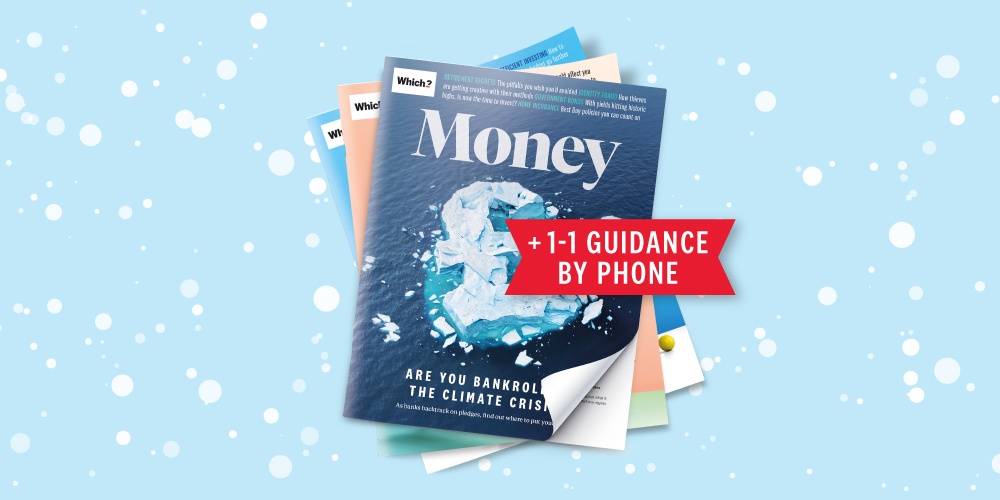
Get a year of super-useful advice
Get the best deals, avoid scams, and grow your savings with expert guidance all year for only £36.75 that’s 25% off.
Join Which? MoneyOffer ends 8th January 2026
By clicking a retailer link you consent to third-party cookies that track your onward journey. This enables W? to receive an affiliate commission if you make a purchase, which supports our mission to be the UK's consumer champion.

Instant-access savings rates are falling, but a handful of providers are bucking this trend by launching 5% interest deals. There's a catch though.
New market-leading products from Skipton Building Society and digital challenger Chase, for example, both include introductory bonus rates that drop after a year. You'll also need to be an existing customer to open either of these accounts.
Here, Which? takes a closer look at what else you might need to compromise on to get the very best rate – and whether the extra effort is worth it.

Get the best deals, avoid scams, and grow your savings with expert guidance all year for only £36.75 that’s 25% off.
Join Which? MoneyOffer ends 8th January 2026
Savings rates have been on their way down since the Bank of England cut the base rate in August 2024, which was the first reduction in four years.
Banks typically respond to a base rate cut by reducing the interest paid on savings accounts. Instant-access accounts are usually hit first, as their variable rates allow providers to adjust returns whenever they choose.
Using Moneyfacts data, we looked at all instant-access rates on 30 April and again on 2 June — just over a week before and nearly four weeks after the base rate was cut on 8 May.
We found that 38% of rates had dropped during that period. That’s significantly more than when we ran a similar analysis five days after the same base rate decision, when just 7% of deals had been cut.
It's important to remember that the base rate isn't the only factor influencing savings rates.
Demand for a product or competition from other providers can push rates up and down. Some of the rate cuts in our analysis may have been agreed in advance and might not reflect a direct response to the Bank of England's decision.
All eyes will be on the Bank of England when it meets to make another base rate decision on Thursday 19 June.
While we won't know the outcome until the day, the base rate is predicted to fall further over the next year or so. This means savings rates may continue to drop, so it could be a good time for savers to review their options.
Instant-access accounts currently offer some of the highest rates on the market. This table shows how today’s top deals compare, ordered by rate:
| Account | AER | Minimum deposit |
|---|---|---|
| Chase Saver With Boosted Rate | 5% | None |
| Skipton Building Society Member Bonus Saver | 5% | £1 |
| Cahoot Sunny Day Saver | 5% | £1 |
| Atom Bank Instant Access Saver Reward | 4.75% | None |
| Snoop Easy Access Savings Account | 4.6% | £1 |
Source: Moneyfacts. Correct as of 12 June 2025, but rates are subject to change.

Find the right savings account for you using the service provided by Experian Ltd
Compare and chooseThe accounts topping our table are certainly appealing, but getting one of these top rates isn't always straightforward.
The top four accounts come with significant strings attached; only Snoop's Easy Access product offers a competitive rate without restrictions.
Here are three common caveats savers may need to accept to get one of these deals:
A boosted savings account offers a higher interest rate for a set period of time.
Chase's Saver with Boosted Rate offers 5% AER, but that includes a bonus rate of 2.25%, fixed for 12 months. Once the year is up, you'll only get the standard rate, which is currently set at 2.75% AER.
Skipton Building Society's Member Bonus Saver also features a 12-month bonus rate of 2.2% AER. That's added to a standard rate of 2.8%.
The main risk with this type of deal is that if you don't keep track and switch when the bonus ends, you could end up earning far less interest than you might get elsewhere.
Don’t forget, the overall rate could still change before the bonus expires — the standard rate is variable, and the provider can change it at any time.
Some top-rate products limit the number of withdrawals that savers can make. In exchange, providers usually reward you with a higher rate of interest.
Atom Bank currently offers 4.75% AER on its Instant-Access Saver Reward product, but that rate drops to 2.5% if you make any withdrawals.
These accounts are unlikely to suit you if you think you might need to dip into your savings regularly.
Some of the top savings accounts are often reserved for existing customers of the bank or building society. This usually means having a current account but, in some cases, other products such as a mortgage or investment account may also qualify.
For example, Skipton Building Society currently offers the second-best instant-access account, with a rate of 5% AER. However, it's only available to customers who have held a mortgage or savings account with Skipton on or before 2 June 2025.
Chase also requires customers to open a current account before they access one of its savings products.
Two of the top five instant-access accounts in our rates table come with low maximum deposit limits.
Cahoot's Sunny Day Saver, which has topped the charts for months with its 5% rate, is easy to open and available to all. But there’s a catch: interest is only paid on balances up to £3,000 – anything above that earns nothing.
Skipton's Building Society's Member Bonus Saver is also restricted to smaller balances, with a maximum deposit of £5,000.
There are no 5% deals currently available on fixed-term accounts, but locking your money away for a year or more could help protect it if savings rates continue to fall.
That's because, unlike variable-rate instant-access accounts, fixed-term bonds guarantee that your rate wouldn't drop during the term.
At the moment, rates are similar across fixed bonds regardless of length, ranging from 4.43% to 4.46% AER. But fixing for two to five years could still leave you better off in the long run. If you only fix for 12 months or less, you may face lower rates when it's time to reinvest.
Tying your money up in a fixed-term account may curb your temptation to spend your savings, but it also means you won't be able to use the funds in an emergency.
Some providers won't allow customers to access their account before it reaches maturity, while others will only allow you to break the contract in exceptional circumstances. In some instances, you can close or make a withdrawal early in exchange for a loss of interest.
When choosing where to put your savings, make sure your compare accounts from a range of different providers and not just the headline rate.
Our expert guides to the best savings account and high-interest current account can help you make an informed choice, while also flagging any important small print to watch out for.
You can also check our reviews to see how providers measure up for customer service, and find out which ones meet the standards to become a Which? Recommended Provider.